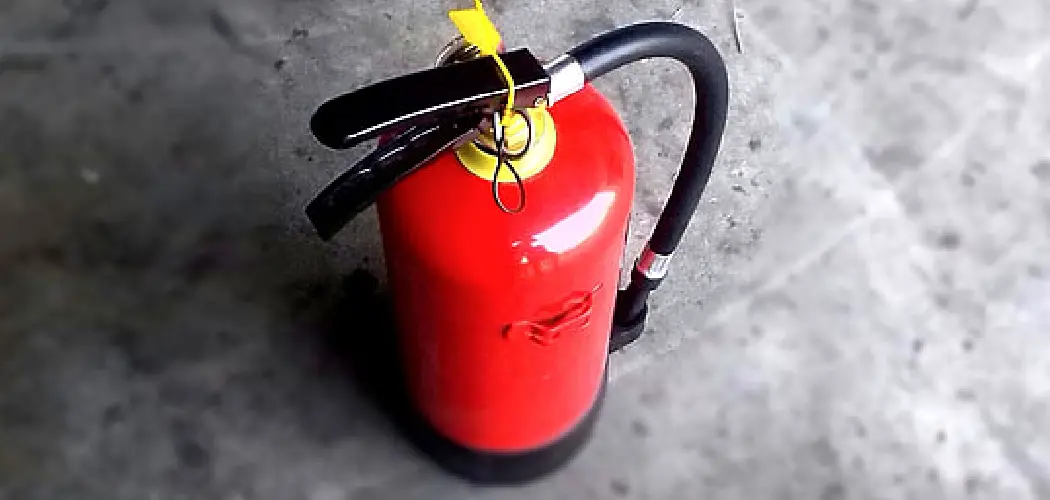A fire extinguisher is an essential safety equipment that should be present in every household, workplace, and public space. It can help control small fires before they become uncontrollable and potentially cause extensive damage.
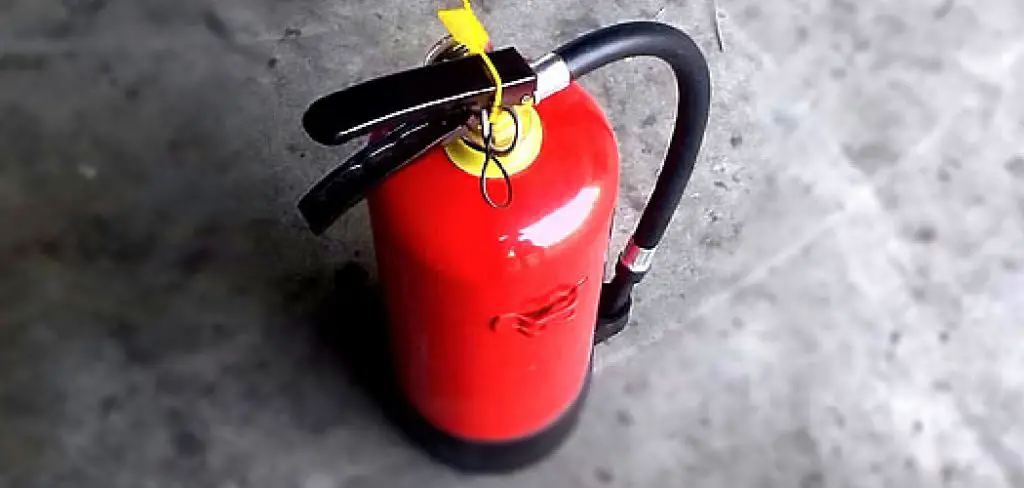
Installing a fire extinguisher in your home or workplace is crucial to preventing fires from causing major damage.
In this guide on how to install fire extinguisher, we will discuss the steps you need to follow to properly install a fire extinguisher.
Necessary Items
Before we dive into the installation process, let’s take a look at the necessary items you will need to install a fire extinguisher:
- Fire Extinguisher: You can purchase a fire extinguisher from any hardware or home improvement store. Make sure to choose one that is suitable for your needs and has the appropriate rating for the type of fire it can handle.
- Mounting Bracket: Most fire extinguishers come with a mounting bracket, but if yours doesn’t have one, make sure to purchase a sturdy and reliable bracket.
- Screws and Anchors: You will need screws and anchors to secure the mounting bracket onto the wall or surface.
- Drill: If you don’t already own a drill, borrow or rent one for this installation process.
- Measuring Tape: Make sure to have a measuring tape on hand to measure and mark the appropriate height for mounting the fire extinguisher.
- Pencil: You will need a pencil to mark the spot where you will drill holes for the screws.
12 Steps on How to Install Fire Extinguisher
Step 1: Choose the Right Type of Fire Extinguisher
The first step in installing a fire extinguisher is choosing the right type for your specific needs. There are different classes of fires, and each requires a specific type of fire extinguisher to effectively put it out. Make sure to read the label on the fire extinguisher and choose one that is suitable for the types of potential fires in your home or workplace.
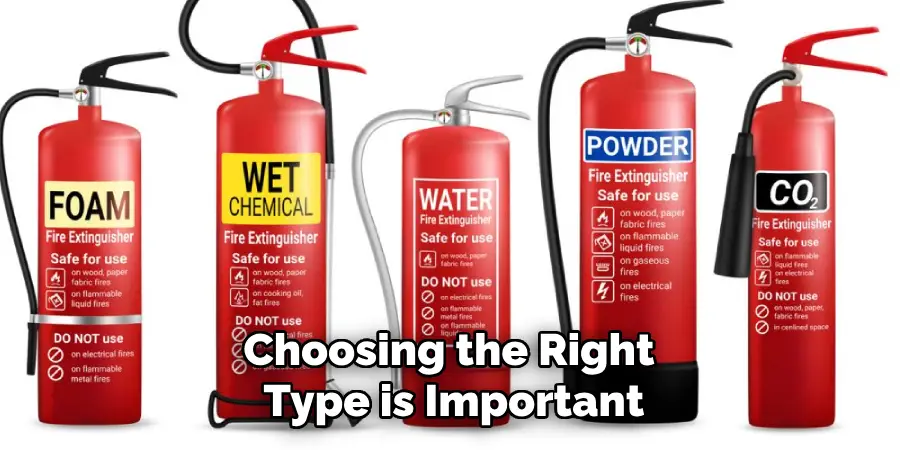
Step 2: Choose the Right Location
The location where you install your fire extinguisher is crucial. It should be easily accessible and visible in case of an emergency. Avoid placing it behind or under objects that may obstruct its reach. As a general rule, fire extinguishers should be placed near potential fire hazards, such as the kitchen or garage.
Step 3: Measure and Mark the Height
Using your measuring tape, measure and mark the appropriate height for mounting the fire extinguisher. The recommended height is usually around 3 to 5 feet from the ground. And make sure to leave enough space for easy access and operation.
Step 4: Prepare the Mounting Bracket
If your fire extinguisher comes with a mounting bracket, attach it to the back of the extinguisher using the screws provided. If not, follow the instructions on how to install the specific bracket you have purchased.
Step 5: Mark and Drill Holes
Using your pencil, mark the spots where you will drill holes for the screws. Make sure to use a level to ensure that the bracket is straight. So, the fire extinguisher will be securely mounted. Keep in mind that some extinguishers may require more than two screws for proper installation.
Step 6: Drill Holes and Insert Anchors
Using the appropriate drill bit, drill holes at the marked spots. Then, insert the anchors provided with your fire extinguisher or use ones that are suitable for the surface you’re drilling into. Like concrete, brick, or drywall.
Step 7: Secure the Bracket
Once the anchors are in place, attach the mounting bracket to the wall or surface using screws. Make sure that it is securely attached and can hold the weight of your fire extinguisher. While some brackets may come with additional features like an anti-theft lock, make sure to utilize them for added safety.
Step 8: Check the Extinguisher’s Pressure
Before mounting the fire extinguisher on the bracket, check its pressure gauge to ensure that it is in the green zone. If it is not, you will need to have it recharged or replaced before installing it.
Step 9: Mount the Extinguisher
After ensuring that the pressure is in the green zone, you can now mount the fire extinguisher on the bracket. Follow any specific instructions provided by your extinguisher’s manufacturer for proper mounting.
Step 10: Test and Familiarize Yourself with the Extinguisher
Once installed, it is crucial to familiarize yourself with the fire extinguisher’s instructions. Know how to operate it and test it out to ensure that you know how to use it correctly in case of an emergency. However, make sure to clean up any residue or mess left behind after testing.
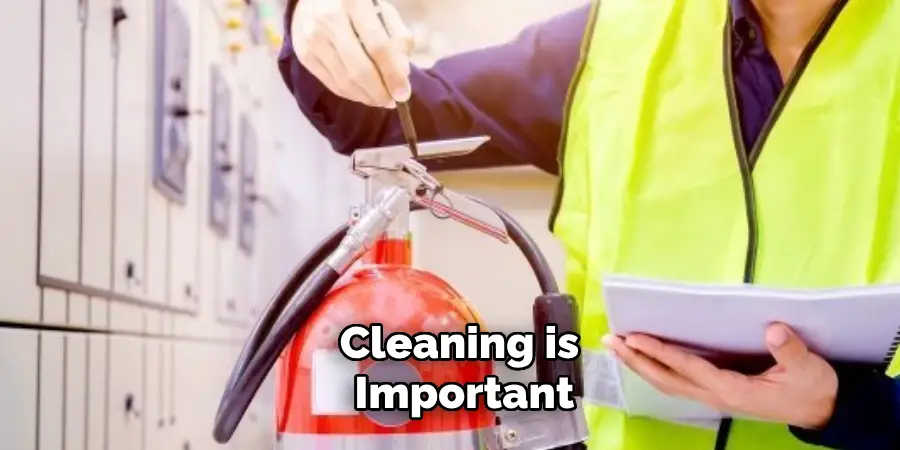
Step 11: Regularly Check and Maintain the Extinguisher
Installing a fire extinguisher is not a one-time task. It needs regular maintenance to ensure that it is in proper working condition in case of an emergency. Check its pressure gauge monthly and have it inspected yearly by a professional.
Step 12: Train Others in the Area
Finally, it is essential to train others in the area where the fire extinguisher is installed. Make sure they know how to operate it correctly and understand its limitations. In case of a fire, having more people trained on how to use a fire extinguisher can save lives and prevent further damage.
Installing a fire extinguisher is a necessary step in keeping your home or workplace safe from potential fires. By following these 12 steps, you can ensure that your fire extinguisher is properly installed and ready to be used in case of an emergency. However, remember to regularly check and maintain it for optimal performance.
9 Safety Measures to Keep in Mind
While having a fire extinguisher at hand is an essential safety measure, it is also crucial to keep the following safety measures in mind:
1) Read the Instructions
Make sure to read the instructions on your fire extinguisher carefully. Familiarize yourself with its operation and limitations. As mentioned earlier, make sure to test it out to ensure that you know how to use it correctly in case of an emergency.
2) Have an Escape Plan
In case of a fire, having a well-thought-out escape plan can save lives. Make sure everyone in your home or workplace knows the escape routes and designated meeting points. Also, practice the escape plan regularly.
3) Know When to Use It
Not all fires can be put out with a fire extinguisher. Make sure to evaluate the situation and only use it when it is safe to do so. If the fire is spreading quickly or you don’t know what is causing it, evacuate immediately and call emergency services.
4) Keep an Eye on Expiration Dates
Fire extinguishers have an expiration date, usually marked on the label or pressure gauge. Make sure to replace it before that date and dispose of old ones properly. If you’re not sure how to dispose of a fire extinguisher, contact your local fire department for guidance.
5) Store it in a Suitable Environment
Fire extinguishers should be stored in an area with temperatures between -40°F to 120°F. Avoid exposing it to direct sunlight or extreme heat, as it can affect its performance. Then, make sure it is easily accessible and not obstructed by objects.
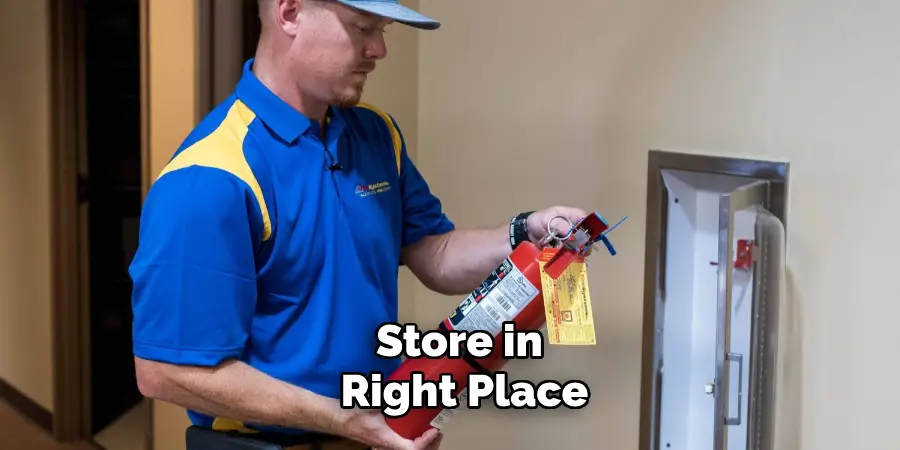
6) Know the Different Types of Fires
There are different types of fires, and each requires a specific type of fire extinguisher. Make sure you have the right type for your home or workplace. The most common types include Class A (ordinary combustibles), Class B (flammable liquids), and Class C (electrical fires).
7) Keep an Eye on Children
Make sure to keep your fire extinguisher out of reach of children. While it is essential to teach them about fire safety, they should not have access to a fire extinguisher without adult supervision. Then, make sure to properly educate them on how and when to use it.
8) Have a Backup Plan
While having a fire extinguisher is crucial, it is always good to have a backup plan. Make sure there are multiple fire extinguishers placed in different locations throughout your home or workplace. Also, consider installing smoke detectors and have a first aid kit at hand.
9) Be Mindful of False Alarms
In case of a false alarm, do not use your fire extinguisher. Discharging it unnecessarily can lead to unnecessary costs and potential damage to your property. Make sure to investigate the cause of the alarm before using the fire extinguisher.
By following these additional safety measures on how to install fire extinguisher, you can ensure that you and those around you are well-prepared and equipped to handle potential fire emergencies. Remember, prevention is always better than dealing with the consequences of a fire.
8 Things to Avoid When Using a Fire Extinguisher
While knowing how to use a fire extinguisher is important, it is also crucial to know what not to do when using one. Here are eight things to avoid when using a fire extinguisher:
1) Standing Too Close
When using a fire extinguisher, make sure you stand at least 6 feet away from the fire. This distance will prevent you from getting injured by flames or heat. As you aim the extinguisher at the base of the fire, use short bursts and move closer only if necessary.
2) Using It on a Large Fire
As mentioned earlier, not all fires can be put out with a fire extinguisher. If the fire is too large, it is best to evacuate and call emergency services immediately. Trying to put out a large fire with a fire extinguisher can put you in harm’s way and delay the necessary response.
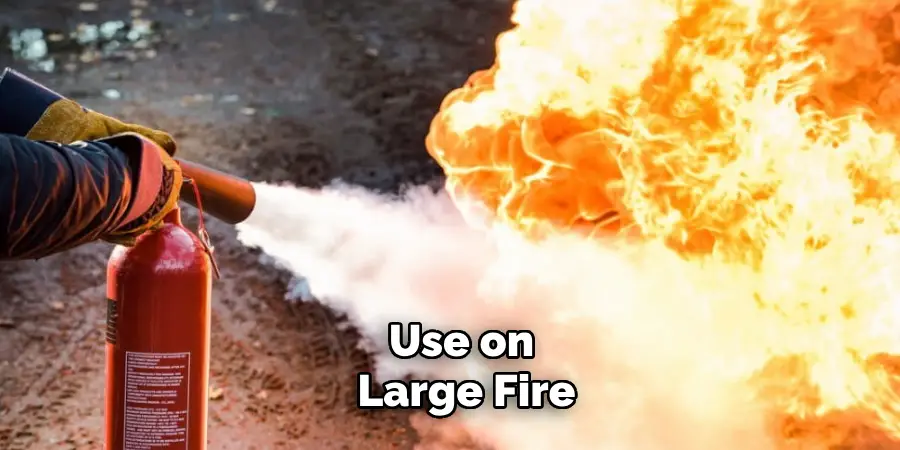
3) Forgetting to Pull the Pin
Before using a fire extinguisher, make sure to pull the safety pin located on the top of the extinguisher. This pin prevents accidental discharge, so make sure to remove it before aiming at the base of the fire.
4) Holding the Extinguisher Upside Down
Fire extinguishers are designed to be held upright, with the nozzle pointing at the base of the fire. Holding it upside down can cause the propellant and extinguishing agent to mix unevenly, affecting its effectiveness.
5) Not Checking the Pressure Gauge
Before using a fire extinguisher, make sure to check the pressure gauge. If it is not in the green zone, do not use it, as it may not have enough pressure to put out the fire. So, make sure to regularly check and maintain your fire extinguisher.
6) Using the Wrong Type
Using the wrong type of fire extinguisher can be dangerous and ineffective. Make sure you have the right type for the specific fire (Class A, B, or C). If you are unsure, evacuate and call emergency services instead.
7) Not Aiming at the Base of the Fire
When using a fire extinguisher, it is important to aim at the base of the fire. This is where most fires start, and by aiming there, you can smother the flames and prevent them from spreading. While it may be tempting to aim at the top of the fire, this can actually make it worse.
8) Attempting to Use a Damaged Extinguisher
If your fire extinguisher is damaged or has been previously used, do not attempt to use it. It may not work properly and could potentially cause harm. Make sure to replace any damaged or previously used extinguishers with new ones. By avoiding these actions, you can effectively and safely use a fire extinguisher in case of an emergency. Remember to always prioritize your safety and evacuate if the situation becomes too dangerous to handle on your own.
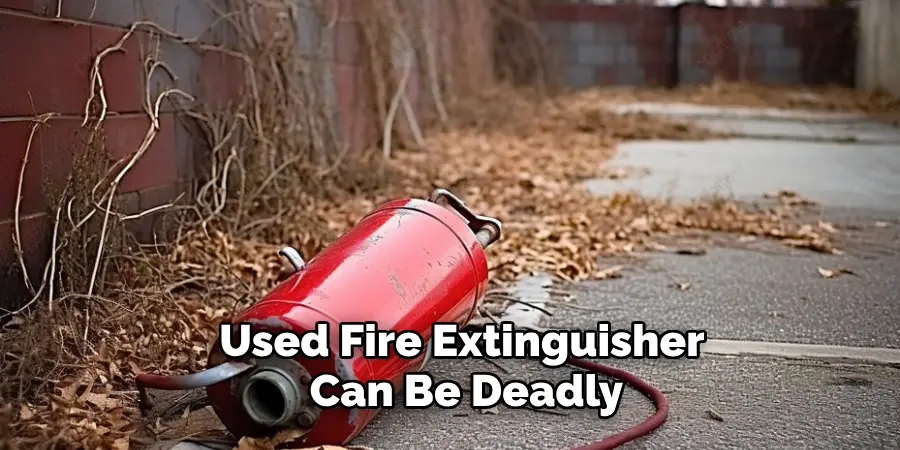
8 Additional Tips for Fire Safety
Apart from having a fire extinguisher and knowing how to use it properly, here are eight additional tips for fire safety:
1) Have an Escape Plan
In case of a fire, make sure you have an escape plan in place. This should include multiple exits, designated meeting spots, and emergency contact numbers. Practice this plan with your family or coworkers regularly.
2) Check Smoke Detectors Regularly
Smoke detectors can save lives by detecting smoke and alerting you of a potential fire. Make sure to regularly check the batteries and replace them if needed. It is also recommended to have a smoke detector on every floor of your home or workplace.
3) Keep Flammable Items Away from Heat Sources
Make sure to keep flammable items, such as curtains, paper, and cleaning supplies, away from heat sources like stoves or heaters. This will reduce the risk of a fire starting. Even if a fire does occur, it will have less fuel to grow.
4) Properly Store Flammable Liquids
If you have flammable liquids at home or in the workplace, make sure to store them in approved containers and cabinets. Keep them away from heat sources and potential ignition sources. Just like with other flammable items, proper storage can prevent fires from starting.
5) Do Not Leave Candles Unattended
Candles may create a soothing atmosphere, but they can also be a fire hazard. Never leave them unattended, and make sure to extinguish them before leaving the room or going to bed. Consider using flameless candles instead for added safety.
6) Have a First Aid Kit
In case of a fire emergency, make sure to have a first aid kit at hand. This kit can help treat minor injuries until medical professionals arrive. Make sure to regularly check and restock the first aid kit as needed.
7) Educate Children on Fire Safety
Teach children about fire safety at an early age. This includes not playing with matches or lighters and knowing what to do in case of a fire. Make sure they are aware of the escape plan and practice it with them regularly.
8) Be Prepared for Wildfires
If you live in an area prone to wildfires, make sure to have an emergency evacuation plan in place. Stay informed about potential fires in your area and follow the instructions of local authorities. It is also recommended to have a “go bag” ready with essentials in case you need to evacuate quickly.
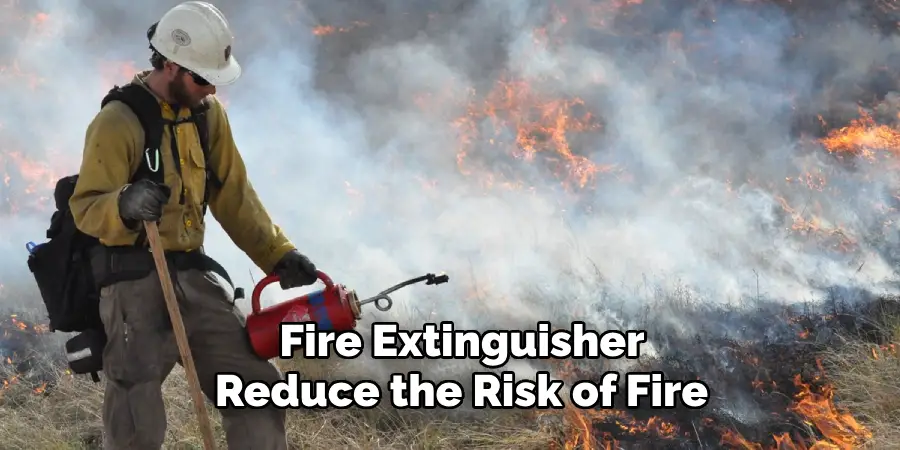
By following these additional tips on how to install fire extinguisher, you can reduce the risk of fire and keep yourself and others safe in case of an emergency. Remember, prevention is key when it comes to fire safety.
Frequently Asked Questions
How Often Should I Check My Fire Extinguisher?
It is recommended that you check your fire extinguisher at least once a month and have it professionally inspected every year. As mentioned earlier, make sure to also check the pressure gauge regularly and replace any damaged or used extinguishers.
Can I Use Water to Put Out a Fire?
It depends on the type of fire. Water is generally not recommended for electrical or grease fires, as it can make them worse. Make sure to use the appropriate type of fire extinguisher for each type of fire.
What Should I Do if a Fire Extinguisher Doesn’t Put Out the Fire?
If your fire extinguisher is not able to put out the fire, evacuate immediately and call emergency services. Do not try to fight the fire on your own if it becomes too dangerous. Remember, your safety should always come first.
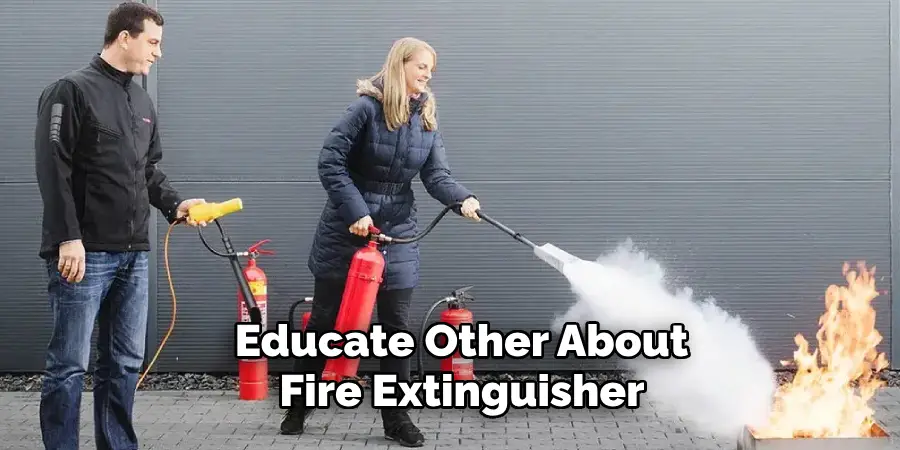
Conclusion
Knowing how to properly use a fire extinguisher is crucial in case of an emergency. By avoiding common mistakes and following these tips on how to install fire extinguisher, you can effectively handle a fire situation and keep yourself and others safe. Remember to regularly check your fire extinguisher, have an escape plan in place, and educate yourself on fire safety. So, these are some tips and precautions you should remember while handling a fire extinguisher.
Make sure to educate others as well, and stay prepared for any emergency situations. Prevention is key in ensuring the safety of yourself and those around you.

